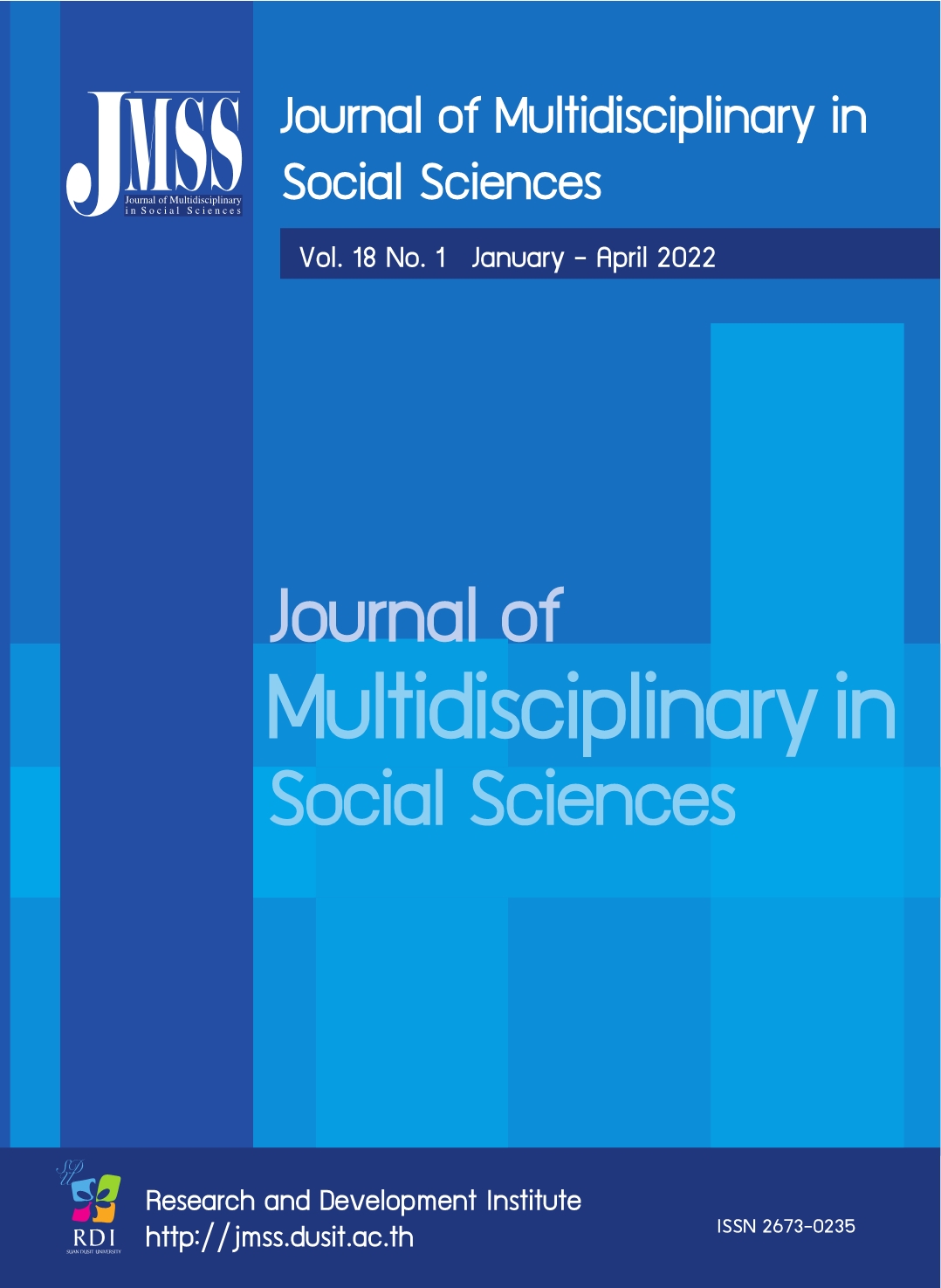The Study of Homestay Management: Key Factors Affecting Homestay Service Expectations in Phra Nakhon Si Ayutthaya Province
Keywords:
Homestay, Service, Expectations, Phra Nakhon Si Ayutthaya provinceAbstract
The objective of this research was to study homestay management in correlation with service expectations for homestays and to study the potential of homestay management and the affects to service expectations for homestays. The researcher conducted a random survey of tourist who visited homestays in Phra Nakhon Si Ayutthaya Province. The quantitative approach using semi-structured questionnaires to collect data from the sample group that consisted of 400 Thai tourists agedbetween 20-60 years. The statistical tools used in the data analysis included percentage, mean and standard deviation and Cronbach's Alpha was used to assess the reliability of the questionnaire at .996. Multiple regression analysis was also used to test the correlation among the variables. The findings showed relationships with the potential of homestay management were correlated with the expectation of service of homestays in accommodating tourists at a high level of .671, and the potential of homestays management of entrepreneurs that affect their service expectations for homestay with a 0.05 level of significance level. As a result, the prediction was presented in the Equation: ŷ = .095 + (.345Fin) + (.072Pro) + (.269Cus) + (.811Learn) means the value of Finance, Customer and Learning & Growth when it increases by 1 unit Y (service expectations for homestay), it increases to .095 + (.345) + (.072) + (.269) + (.811) = 1.592.
References
Al-Ababneh, Mukhles. (2013). Service Quality and its Impact on Tourist Satisfaction. Interdisciplinary Journal of Contemporary Research in Business, 4(12), 164-177
Belas, J., & Gabcova, L. (2014). Reasons for Satisfaction and Dissatisfaction of Bank Customers: Study from Slovakia and the Czech Republic. International Journal of Entrepreneurial Knowledge, 2(1), 4-13.
Chytas, P., Glykas, M., & Valiris, G. (2011). A proactive balanced scorecard. International Journal of Information Management, 31(5), 460-468.
Corigliano, A. (2002). The Route to Quality: Italian Gastronomy Network in Operation. In A. M. Hjalager and G. Richards (eds). Tourism and Gastronomy (pp.166-185). London: Routledge.
Cochran, W. G. (1977). Sampling Techniques (3rd Edition.). John Wiley & Sons, New York. Gray, B. J. (2006). Benchmarking services branding practices. Journal of Marketing Management, 22(7), 717-58.
Irem, K. (2019). The Determination of Performance Measures by Using a balanced scorecard Framework. Foundations of Management, 11(1), 43-56.
Kasikornthai Research Center. (2020). COVID-19 Traces the World Tourism Disruption Expected contract year by 38-45%. Retrieved June 29, 2020, from https://kasikornresearch.com/th/-analysis/k-social-media/Pages/COVID-19-World-Tourism.aspx
Kaplan, R. S. & Norton, D. P. (1996). Strategic learning & the balanced scorecard. Strategy & Leadership, 24(5), 18-24.
Karim, M. A. & Chi, C. (2010). Culinary Tourism as a Destination Attraction: An Empirical Examination of Destinations' Food Image. Journal of Hospitality Marketing & Management, 19(6), 531-555
Athena H.N. Mak, Margaret Lumbers, Anita Eves, Richard C.Y. Chang. (2012). Factors influencing tourist food consumption. International Journal of Hospitality Management, 31, 928-936.
Nejati, M., & Mohamed, B. (2014). Investigating the key factors influencing the travel decisions of international tourists. International Journal of Leisure and Tourism Marketing, 4(2), 106-116.
Olorunniwo, F., & Hsu, M. K. (2006). A typology analysis of service quality, customer satisfaction and behavioral intentions in mass services. Managing Service Quality, 16(2), 106-123.
Prombrom, T., & Kimphakorn, N. (2015). Factors Affecting on Tourists' Experiences in Eco, Culture, And Wellness Tourism in The Upper Northern Provincial Cluster1 of Thailand. Journal of Thai Hospitality and Tourism, 10(1), 71-87
Satchapappichit, S. (2020). Factors Influencing Chinese Visitors’ Dining Experiences. Bangkok: Thai Cuisine.
Sohrabi, B., Vanani, R. I., Tahmasebipur, K., & Fazli, S. (2012). An exploratory analysis of hotel selection factors: A comprehensive survey of Tehran hotels. International Journal of Hospitality Management, 31(1), 96-106.
Soleyman, I., Sadegheh, H., & Nahideh, N. (2017). The Impact of the Implication of Balanced Scorecard Model (BSC) in Performance of the Post Company. Problems and Perspectives in Management, 15(4), 191.
Tippong, D. (2020). relationships between sufficiency economy philosophy and business performance using balanced scorecard: a case study of logistics business in southern Thailand. ABAC Journal, 40(4), 98-113.
Tourism and Sports Economy Division. (2021). Number of foreign tourists and income from foreign tourists. Retrieved June 29, 2020, from https://www.mots.go.th/more_news_new.php?cid=630
UNWTO. (1995). UNWTO technical manual: Collection of Tourism Expenditure Statistics Retrieved June 29, 2020, from https://pub.unwto.org/WebRoot/Store/Shops/Infoshop/Products/1034/1034-1.pdf
Wang, Y. (2007). Customized authenticity begins at home. Annals of Tourism Research, 34(3), 789-804.
WTTC. (2019). Travel & tourism economic impact 2018 thailand - WTTC. Retrieved June 2, 2019, https://www.wttc.org/-/.../economic.../countries-2018/thailand2018.pdf.
Yahaya, I. (2004). Homestay Programme in Malaysia, ASEAN Journal on Hospitality and Tourism, 3(1), 65-75.
Vilic, S., & Dujakovic,T. (2016). Gastronomy and tourism destination competitiveness. Singidunum University International Scientific Conference on Quality as A Basis for Tourism Destination Competitiveness. Book of Proceedings. September 30, 2016
Zeithaml, V. A., Berry, L. L., & parasuraman, A. (1996). The behavioral consequences of service quality. Journal of Marketing, 60(2), 31-46.
Downloads
Published
How to Cite
Issue
Section
License

This work is licensed under a Creative Commons Attribution-NonCommercial-NoDerivatives 4.0 International License.








